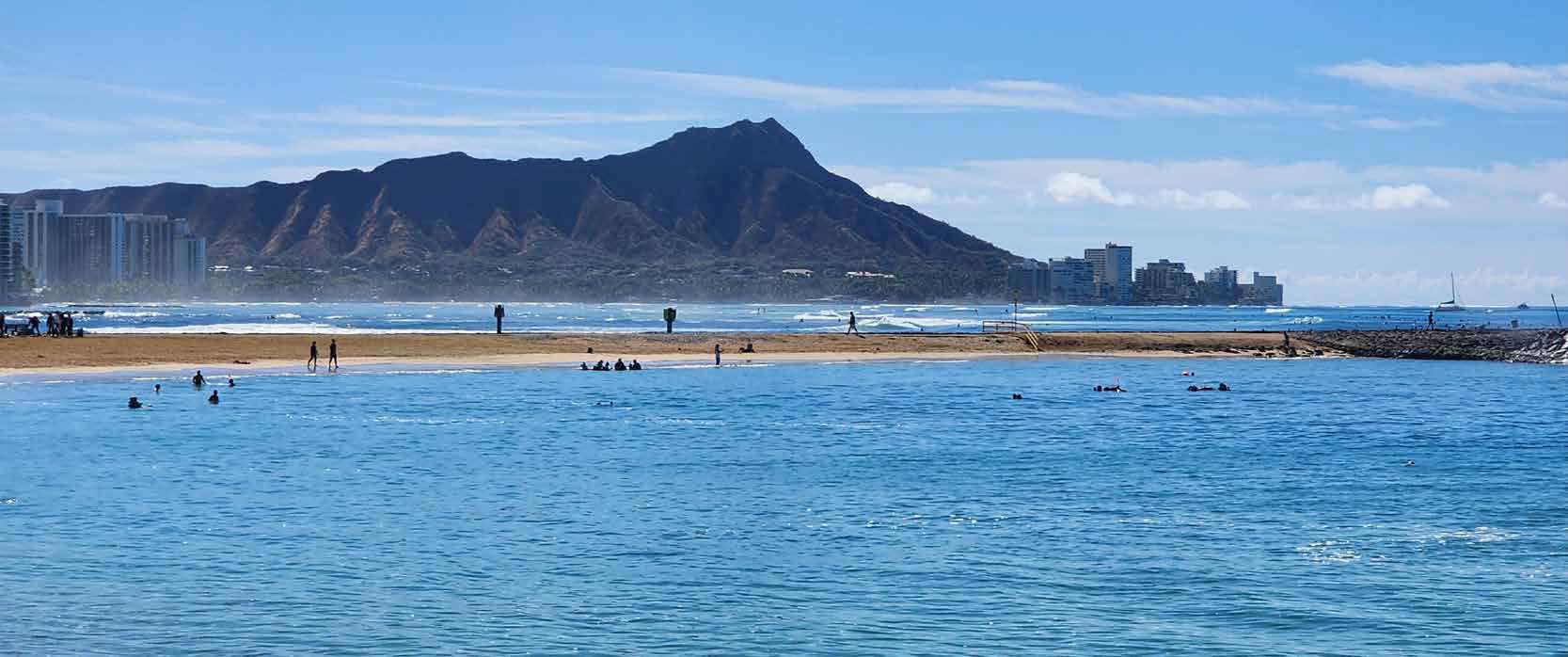
Melissa May AICP
Manager, Strategic Services Group
Senior Planner | Associate
Resilience Practice Leader
In many places, options for protection or accommodation of shifting shorelines are limited, and Hawai‘i’s State law and constitution contain stringent protections for sandy beaches and shoreline access as a public trust resource. This means that in many places across Hawai‘i, the only feasible option will be to shift vulnerable development mauka over time. This can be done strategically and intentionally, through managed retreat, or it can be done reactively, which is essentially “unmanaged retreat.” The costs, risks, and equitability of how retreat happens can look very different depending on how (and whether) it is managed.
I recently attended a conference hosted by the Columbia University Climate School conference, At What Point Managed Retreat?: Habitability and Mobility in an Era of Climate Change. It brought togethera diversity of experts to address the challenge of how to implement managed retreat. There were dozens of sessions presenting tools, best practices, and examples from around the world, including from other island nations. While the Hawai‘i attendees learned a lot and benefited from the peer exchange, I and others were somewhat surprised to learn that in numerous ways, Hawai‘i is farther ahead than many other places with our strong public trust doctrine and integration of future sea level rise into shoreline setbacks and other land use regulations. On the other hand, some of the tools that were commonly used in other locations, such as buyouts of coastal properties at pre-hazard value, are less feasible in Hawai‘i with our extremely high property values. SSG Planner Ollie Gaskell, who also attended the conference observed that there were few examples of managed retreat tools other than buyouts presented at the conference which was disappointing and underscores the need for Hawai‘i to continue its explorations of tools such as transferable development rights, land swaps, and buyouts with a leaseback option.
Energized by the conference’s substance, a dozen representatives who attended from Hawaii, convened afterwards to discuss next steps for the Islands. The group’s observations are captured in this article for the Hawai‘i Chapter of the American Planning Association (APA), co-authored with Ollie.
At What Point Managed Retreat?: Takeaways from the 2023 Managed Retreat Conference
MANAGING MANAGED RETREAT
Melissa May
Shifting shorelines due to coastal erosion, storm surges, and other factors is nothing new in Hawai‘i. However, sea level rise is greatly accelerating these processes. As a result, more than 70% of Hawai‘i’s beaches are chronically eroding and more and more coastal development and infrastructure across the state is imminently threatened.
In many places, options for protection or accommodation of shifting shorelines are limited, and Hawai‘i’s State law and constitution contain stringent protections for sandy beaches and shoreline access as a public trust resource. This means that in many places across Hawai‘i, the only feasible option will be to shift vulnerable development mauka over time. This can be done strategically and intentionally, through managed retreat, or it can be done reactively, which is essentially “unmanaged retreat.” The costs, risks, and equitability of how retreat happens can look very different depending on how (and whether) it is managed.
I recently attended a conference hosted by the Columbia University Climate School conference, At What Point Managed Retreat?: Habitability and Mobility in an Era of Climate Change. It brought togethera diversity of experts to address the challenge of how to implement managed retreat. There were dozens of sessions presenting tools, best practices, and examples from around the world, including from other island nations. While the Hawai‘i attendees learned a lot and benefited from the peer exchange, I and others were somewhat surprised to learn that in numerous ways, Hawai‘i is farther ahead than many other places with our strong public trust doctrine and integration of future sea level rise into shoreline setbacks and other land use regulations. On the other hand, some of the tools that were commonly used in other locations, such as buyouts of coastal properties at pre-hazard value, are less feasible in Hawai‘i with our extremely high property values. SSG Planner Ollie Gaskell, who also attended the conference observed that there were few examples of managed retreat tools other than buyouts presented at the conference which was disappointing and underscores the need for Hawai‘i to continue its explorations of tools such as transferable development rights, land swaps, and buyouts with a leaseback option.
Energized by the conference’s substance, a dozen representatives who attended from Hawaii, convened afterwards to discuss next steps for the Islands. The group’s observations are captured in this article for the Hawai‘i Chapter of the American Planning Association (APA), co-authored with Ollie.
Read More about Managed Retreat
At What Point Managed Retreat?: Takeaways from the 2023 Managed Retreat Conference

Melissa May AICP
Manager, Strategic Services Group
Senior Planner | Associate
Resilience Practice Leader Manager,

